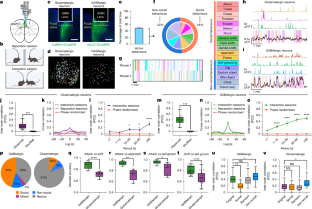2025-06-02 オークリッジ国立研究所 (ORNL)
<関連情報>
- https://www.ornl.gov/news/exploring-materials-fusion-energy-ornls-yan-ru-lin
- https://www.sciencedirect.com/science/article/abs/pii/S1359645424004622
11B濃縮ZrB2超高温セラミックスの高温中性子照射に対する応答性 Response of 11B enriched ZrB2 ultra-high temperature ceramic to neutron irradiation at elevated temperatures
Yan-Ru Lin, Takaaki Koyanagi, David J. Sprouster, Christian M. Petrie, William Fahrenholtz, Greg E. Hilmas, Yutai Katoh
Acta Materialia Available online: 14 June 2024
DOI:https://doi.org/10.1016/j.actamat.2024.120111
Graphical abstract

Abstract
ZrB2, an ultra-high temperature ceramic (UHTC) is being considered for use in fusion reactor first-wall structures, yet its response to irradiation remains poorly understood. This study employed scanning/transmission electron microscopy (S/TEM), synchrotron X-ray diffraction (XRD), finite element calculations, and thermal property measurements to thoroughly investigate the neutron-irradiation effects on 11B-enriched ZrB2. Neutron irradiations were conducted at 220 °C and 620 °C, with a neutron fluence of 2.2 × 1025 neutron/m2 (energy > 0.1 MeV), resulting in 3.9 dpa and 4200 appm He. The study revealed the unusual prevalence of prism loops and a > c anisotropic lattice swelling, likely linked to the low c/a ratio of ZrB2, leading to grain boundary microcracking. Reducing the grain sizes was effective in reducing intergranular cracking and macroscopic swelling. The observation of cavities in ZrB2 irradiated at 620 °C, as opposed to 220 °C, prompts questions about the temperature at which vacancies in ZrB2 become mobile, and the role of neutron absorption by 10B in elevating irradiation temperatures. Isotopic enrichment in 11B proves to be a viable strategy for mitigating helium production in transition-metal diborides, which is a critical consideration for nuclear applications. Irradiation-induced defects reduce the thermal diffusivity and conductivity of ZrB2 by a factor of 4–9, which has important implications for its role as a plasma-facing material in fusion reactors that drive high heat fluxes through first-wall materials. This comprehensive study lays the foundation for understanding ZrB2 behavior under neutron irradiation and highlights important phenomena to consider for various material applications.



